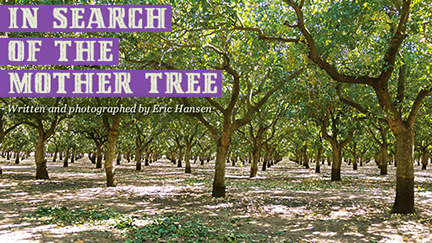
In the current issue of ARAMCO World, which is available free online, there is an interesting article on how Iranian pistacios came to California. Click here for the full article. I attach a teaser below…
In 1957, a small experimental orchard in Chico, California distributed to commercial nut-growers a promising new variety of pistachio tree from Iran, called Kerman.
The United States Department of Agriculture wanted to see how these Kerman trees might perform in the richly fertile Central Valley of California.
By 2013, the Kerman had created a billion-dollar agricultural industry, and what was once a delicacy was a long way toward becoming a common household snack. University of California pistachio specialist Louise Ferguson calls the California Kerman pistachio tree “the single most successful plant introduction of the 20th century.â€